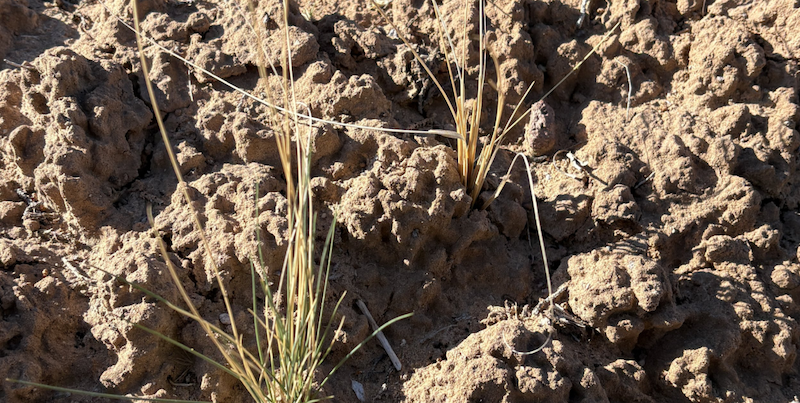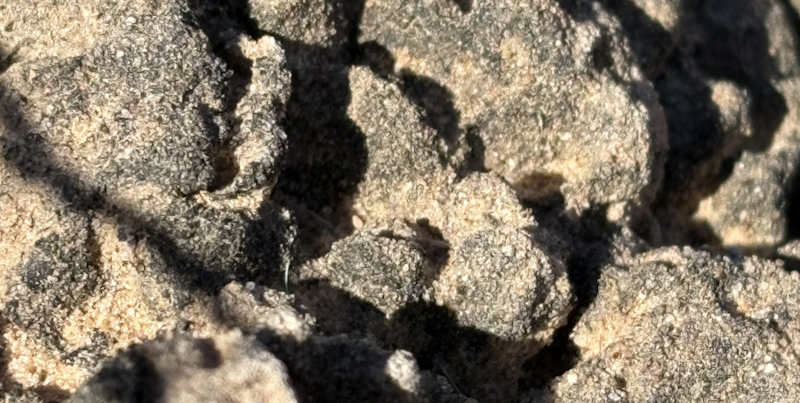|
By Felicia Fredd
Xtreme Design SW “Think of a desert and you probably picture dry, dead dirt. If so, surprise! Much of the world’s most arid ground is alive with a tiny ecosystem, no more than a few inches thick. It’s so tiny, in fact—so thin and delicate, so apparently parched and lifeless—that this “secretly living” layer of soil is called a cryptobiotic crust.” https://www.newmexicology.com/the-blog/2016/1/26/dark-secrets-of-the-cryptobiotic-crust As I’ve pursued research into effective design techniques for erosion control, I’ve been sidetracked by dozens of ‘desert transformation’ YouTube videos - most of which are associated with permaculture activities and display the terms ‘restoration’ or ‘restorative’ in their titles. One in particular witnessed a 10-acre site that had been brutalized in the name of ‘restorative’ water harvesting. In this video, a YouTuber walked viewers along a path of destruction where he’d run a backhoe over sloped dryland soils, such as ours, in order to more easily carve an array of dams, berms, and zuni bowl pits. These earthworks were then reinforced using most of the hand-sized rocks scattered on the land surface, where they had been doing a fine job of protecting the soil, and slowing water runoff, but which gave the added benefit, he explained, of creating valuable divets in the soil surface. Some of these types of projects are pretty interesting in one respect or another, but so much of the motivation seems driven by abstract ideas about environmental ‘improvement’ without any particular knowledge of said environment. One guy filming in a grassy field with his cows said of his neighbor’s contrasting sagebrush rangeland “It’s just sitting there; it’s not doing anything!” He obviously didn’t get the memo about all the special wildlife supported by large sagebrush communities; however, I’m glad he said what he did because the many ways people see and experience landscape is pretty fascinating business. I just wanted to point out that tearing into fragile desert landscapes with romantic notions of ‘improving’ the local ecology can easily do more harm than good. Here, for example, we have something called cryptobiotic soil. It’s that bumpy textured soil crust we’ve all at least vaguely noticed, and what it does is hold things in place, help with the process of nitrogen and carbon fixation, and hold moisture. Being composed of microscopic sugar filaments, and tiny blue green algae, it is ridiculously fragile. It’s destruction will sometimes be unavoidable, but it is “… critical to maintaining the health of wide swaths of land across New Mexico.” “Because these soils have higher nitrogen and water content than uncolonized soil, and because they are stabilized against erosion, they provide ideal conditions for desert plants to germinate and grow. Biological soils are the foundation for healthy desert plant communities.” https://www.nps.gov/glca/learn/nature/soils.htm
1 Comment
Sara Wright
5/3/2025 07:36:04 am
I have written so much about the underground mycelial networks - but you are highlighting the most critical issue for the desert. I am just hoping people will be paying attention... i copy part of what you wrote because it's so important...
Reply
Your comment will be posted after it is approved.
Leave a Reply. |
Submit your ideas for local feature articles
Profiles Gardening Recipes Observations Birding Essays Hiking AuthorsYou! Archives
October 2025
Categories
All
|


 RSS Feed
RSS Feed